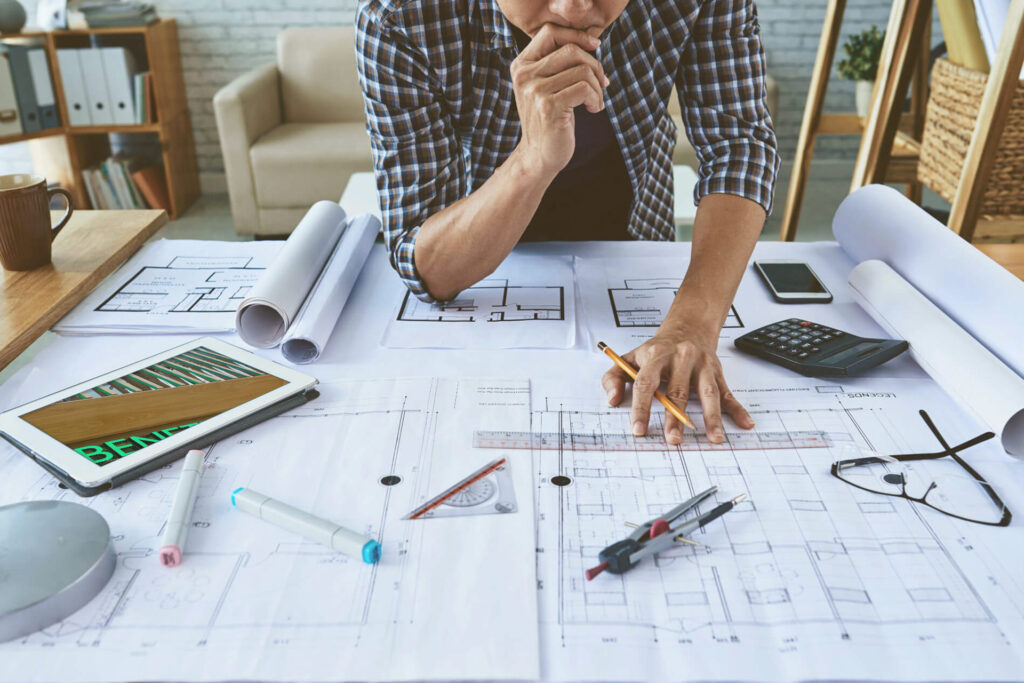Structural design is a crucial aspect of any construction project, whether it’s a small residential building or a large commercial complex. It involves creating a detailed plan to ensure the safety, stability, and durability of the structure. For beginners, understanding the basics of Structural Design Services can be quite helpful. Here’s a simple guide to get you started:
1. What is Structural Design?
Structural design is the process of planning, analyzing, and detailing the structural elements of a building. It ensures that the structure can withstand various forces, such as gravity, wind, and earthquakes, while remaining safe and functional. The design must account for load-bearing elements like beams, columns, foundations, and walls.
2. Key Elements of Structural Design
There are several critical components that structural engineers focus on when designing a structure:
- Load Analysis: Understanding different types of loads (dead load, live load, wind load, seismic load) and how they affect the building.
- Material Selection: Choosing suitable materials (concrete, steel, wood, etc.) based on the requirements and purpose of the structure.
- Structural Stability: Ensuring the building remains stable and doesn’t tilt, collapse, or crack under pressure.
- Safety Standards: Adhering to building codes and regulations to ensure safety and compliance.
3. Types of Structural Design Services
Structural design services vary depending on the type of project and specific requirements. Common services include:
- Residential Structural Design: Creating plans for houses, apartments, and other residential buildings.
- Commercial Structural Design: Designing structures for offices, shops, malls, and other commercial spaces.
- Industrial Structural Design: Planning for factories, warehouses, and production plants, which often require special design considerations.
- Bridge and Infrastructure Design: Developing designs for bridges, roads, tunnels, and other infrastructure projects.
4. The Structural Design Process
The structural design process typically follows these steps:
- Initial Consultation: Discussing project needs, budget, and design preferences with the client.
- Site Analysis: Inspecting the location to understand soil quality, topography, and environmental conditions.
- Conceptual Design: Creating initial sketches and layouts to outline the basic structure.
- Detailed Design & Calculation: Developing a detailed plan with precise calculations to ensure stability and safety.
- Drafting & Documentation: Preparing technical drawings and documents that can be used during construction.
- Review & Approval: Submitting designs for approval to relevant authorities and making any necessary revisions.

5. Why are Structural Design Services Important?
Structural design services are essential for several reasons:
- Safety: Proper design ensures the safety of occupants and minimizes the risk of structural failure.
- Cost Efficiency: Good design helps in optimizing material use, reducing waste, and lowering overall construction costs.
- Longevity: Well-designed structures have a longer lifespan and require less maintenance.
- Compliance: Ensures that the construction meets local building codes and regulations, preventing legal complications.
6. Choosing the Right Structural Design Service Provider
When selecting a structural design service, consider the following factors:
- Experience and Expertise: Look for companies with a proven track record and experienced engineers.
- Portfolio: Review previous projects to gauge the quality and style of their designs.
- Certifications and Compliance: Ensure the service provider follows industry standards and holds the necessary certifications.
- Communication: Clear and consistent communication throughout the project is essential for success.
Conclusion
Understanding structural design services is vital for anyone planning a construction project. From ensuring safety to optimizing costs, a well-thought-out design can make a significant difference. Whether you’re building a house or a commercial complex, consulting a professional structural engineer is always a wise decision.
With this guide, you now have a basic understanding of what structural design involves and why it is important. Happy building!
Air Fryer Paper Liners Disposable:100PCS Non-Stick Parchment Paper, Food Grade Baking Paper for Baking Roasting Microwave (8IN-Round) (Square)
₹274.00 (as of 7 November, 2024 18:25 GMT +05:30 - More infoProduct prices and availability are accurate as of the date/time indicated and are subject to change. Any price and availability information displayed on [relevant Amazon Site(s), as applicable] at the time of purchase will apply to the purchase of this product.)Pigeon by Stovekraft Amaze Plus Electric Kettle (14289) with Stainless Steel Body, 1.5 litre, used for boiling Water, making tea and coffee, instant noodles, soup etc. (Silver)
₹549.00 (as of 7 November, 2024 18:26 GMT +05:30 - More infoProduct prices and availability are accurate as of the date/time indicated and are subject to change. Any price and availability information displayed on [relevant Amazon Site(s), as applicable] at the time of purchase will apply to the purchase of this product.)Amazon Brand - Presto! Garbage Bags Small 180 Count|17 x 19 Inches Black , For Dry & Wet waste|30 bags/roll (Pack of 6)
₹275.00 (as of 7 November, 2024 18:26 GMT +05:30 - More infoProduct prices and availability are accurate as of the date/time indicated and are subject to change. Any price and availability information displayed on [relevant Amazon Site(s), as applicable] at the time of purchase will apply to the purchase of this product.)URBAN INSPIRATIONS Metal Wall Clock Big Antique Decorative Home Interior Stylish Watch & Silent Machine Gold for Bedroom/Living Room/Dining/Office/Farm/Cafes/Restaurant/Hotels/House/Hall Items 70cm
₹979.00 (as of 7 November, 2024 18:25 GMT +05:30 - More infoProduct prices and availability are accurate as of the date/time indicated and are subject to change. Any price and availability information displayed on [relevant Amazon Site(s), as applicable] at the time of purchase will apply to the purchase of this product.)Shalimar Premium Garbage Bags ( Lavender Fragrance ) Size 19 X 21 Inches (Medium) 120 Bags (4 Rolls) Dustbin Bag/Trash Bag - Black Color
₹299.00 (as of 7 November, 2024 18:26 GMT +05:30 - More infoProduct prices and availability are accurate as of the date/time indicated and are subject to change. Any price and availability information displayed on [relevant Amazon Site(s), as applicable] at the time of purchase will apply to the purchase of this product.)Discover more from The General Post
Subscribe to get the latest posts sent to your email.





